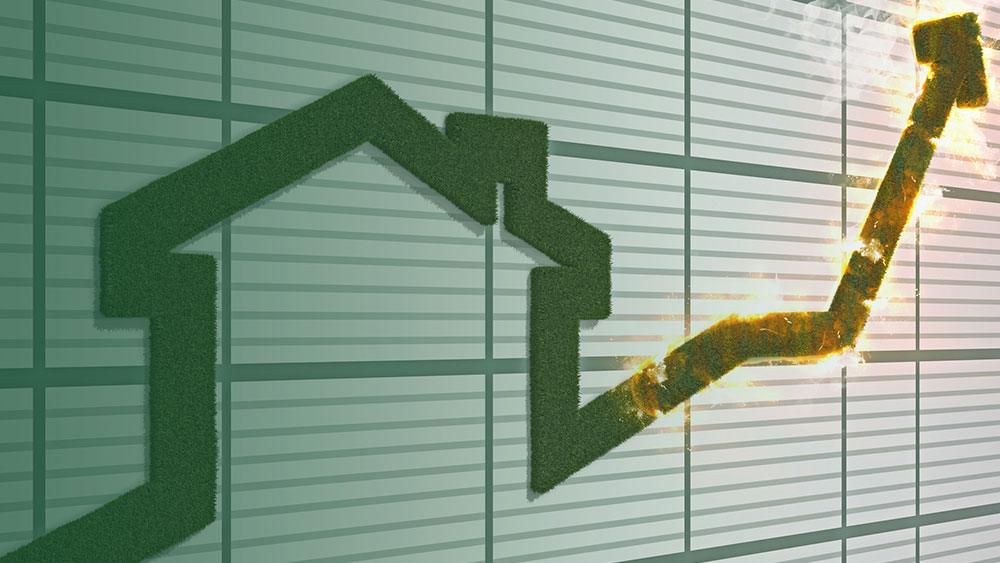How Do Interest Rates Affect the Housing Market?

Most prospective home buyers work with a mortgage lender to finance a home purchase. In fact, according to a U.S. Census statistic in 2020, 64.8% of current homeowners used a mortgage loan to buy their homes.
As interest rates fluctuate, borrowers generally lock in fixed rates to ensure that their monthly mortgage payments remain steady during the life of the loan, typically 15 or 30 years.
Other buyers opt for an adjustable-rate mortgage (ARM) that begins with a seemingly lower interest rate but will adjust later based on existing market conditions.
The mortgage interest rate plays a vital role in most home purchases, often the most significant single investment individuals will ever make.
Why Are Mortgage Interest Rates Important?
To understand the impact of mortgage rates on home buying trends, consider the age-old Economics 101 Supply and Demand relationship. Higher demand and lower supply tend to drive prices higher. Conversely, low demand and higher supply can cause prices to drop.
Consistent with the supply-demand theory, mortgage interest rate changes play a significant role in housing market prices and even the home construction industry by impacting the demand side of the equation.
Interest Rates Impact How Much Individuals Can Afford to Pay for a Home
Interest rates are the cost of borrowing money.
Mortgage loans must be paid back to the lender in preset, usually monthly, amortized increments that include a principal amount and interest calculated over the length of the loan.
While the principal and interest amount remain fixed with fixed-rate mortgages, owners must consider real estate taxes and homeowners insurance that might be retained in an escrow account and included in the borrower’s monthly payment.
During the mortgage loan application process, the lender’s underwriters will assess each prospective borrower’s credit history and calculate affordability statistics like debt-to-income ratio (DTI) to determine the borrower’s ability to manage the monthly debt burden based on their projected income.
When combined with a down payment, the lender’s assessment will calculate a borrowing limit that effectively dictates the maximum amount the prospective borrower can afford.
Impact on Buyer Affordability
Here are two scenarios to demonstrate how affordability changes as mortgage interest rates rise by 2%:
Example 1:
Interest Rate: Fixed 30-year: 3.0%
Home Value: $250,000
Down Payment: 20% = $50,000
Borrowed Principal = $200,000
Monthly Principal & Interest Payment at 3.0% = $ 843.21
Example 2:
Interest Rate: Fixed 30-year: 5.0%
Home Value: $250,000
Down Payment: 20% = $50,000
Borrowed Principal = $200,000
Monthly Principal & Interest Payment at 5.0% = $ 1,073.64
An interest rate change of 2% caused the monthly principal and interest payment to increase by $230.43 per month or $2,765.16 per year.
This difference will disqualify a certain percentage of borrowers and reduce the demand for homes on the market. Over an extended time, the demand reduction can cause a drop in the average selling price of homes.
The differential becomes significantly greater for buyers paying less than a 20% down payment. According to a CNN report, 74% of first-time buyers pay less than a 20% down payment (or mortgage more than 80%) for their home purchase price. As interest rates rise, these individuals will need to work with their Realtor to seek less expensive homes.
Often, interest rate increases result in demand reductions in the number of qualified buyers at every level, a factor that typically drives prices lower.
Falling Interest Rates Can Increase Demand and Drive Prices Up
An increase in buyers tends to drive market prices up in any market. In other words, as demand increases and outpaces supply, prices rise.
In a low-interest rate environment, more buyers qualify to buy a home, eventually driving higher demand, resulting in higher prices.
Rising Interest Rates Can Decrease Demand and Drive Prices Lower
When interest rates rise substantially, fewer qualified buyers become available to buy a home resulting in lower demand and lower prices.
